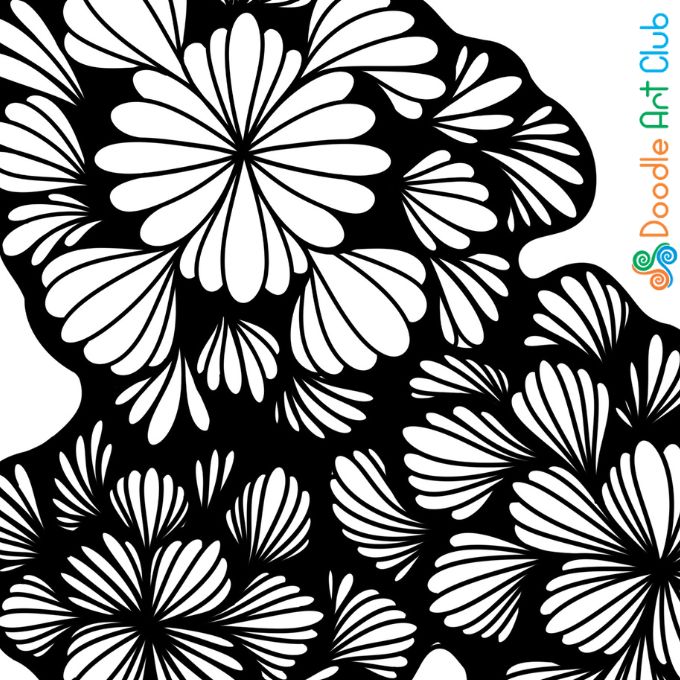Some of the most beautiful doodle patterns come from simple steps. This tutorial shows you how to transform intersecting lines into a glowing, stained-glass effect that looks like colorful pebbles or puddles. It’s an easy and meditative project that blends structure, shading, and finishing touches into something magical.
Step 1 & 2 – Create the Base Grid
Start by drawing 4–6 long diagonal lines across your page. Let them tilt slightly and flow in one motion, almost like zigzags. Then add 3–5 more lines crossing in the opposite direction. These intersecting lines will form the framework for your pebble design.

Step 3 & 4 – Shape the Pebbles
Choose one space created by the lines and begin rounding its corners, drawing a puddle-like shape inside. Repeat this for every space until the entire page is filled with rounded, tile-like shapes. Leave small channels between them to form the outlines of your stained-glass effect.

Step 5 & 6 – Define the Channels
Fill the channels with black ink, keeping the tiles themselves white. Thicken and smooth out these black lines so they resemble puddles of dark water. Be sure to soften all the corners for a natural, flowing look.

Step 7–10 – Add Color
Pick three or four colors you love. Begin filling some tiles with your first color (e.g., warm orange). Add a second color (such as beige) across different tiles. Introduce your third shade (like brown or peachy tan) and distribute evenly. Continue until every tile is filled, creating a balanced, vibrant mosaic.



Step 11 & 12 – Shade for Depth
Take a slightly darker tone of each color and add shading along the perimeter of each tile. Keep your corners rounded. This step creates a soft 3D effect, making your tiles look like polished glass or stone.

Step 13 & 14 – Add Highlights
Using a white pen or marker, draw small curved dashes inside the tiles. Place them consistently on the same side of each puddle to suggest a light source. This finishing touch makes your artwork shine like real stained glass.

Helpful Tips
- Keep your lines loose—natural wobbles add charm.
- Round corners gently so tiles look soft and organic.
- Rotate the page as you work to make curves easier.
- Try different color palettes with complementary or analogous schemes.
- Stay consistent with your shading direction for a unified look.
Most importantly—relax and enjoy the process. The beauty is in both the flow and the final result!




